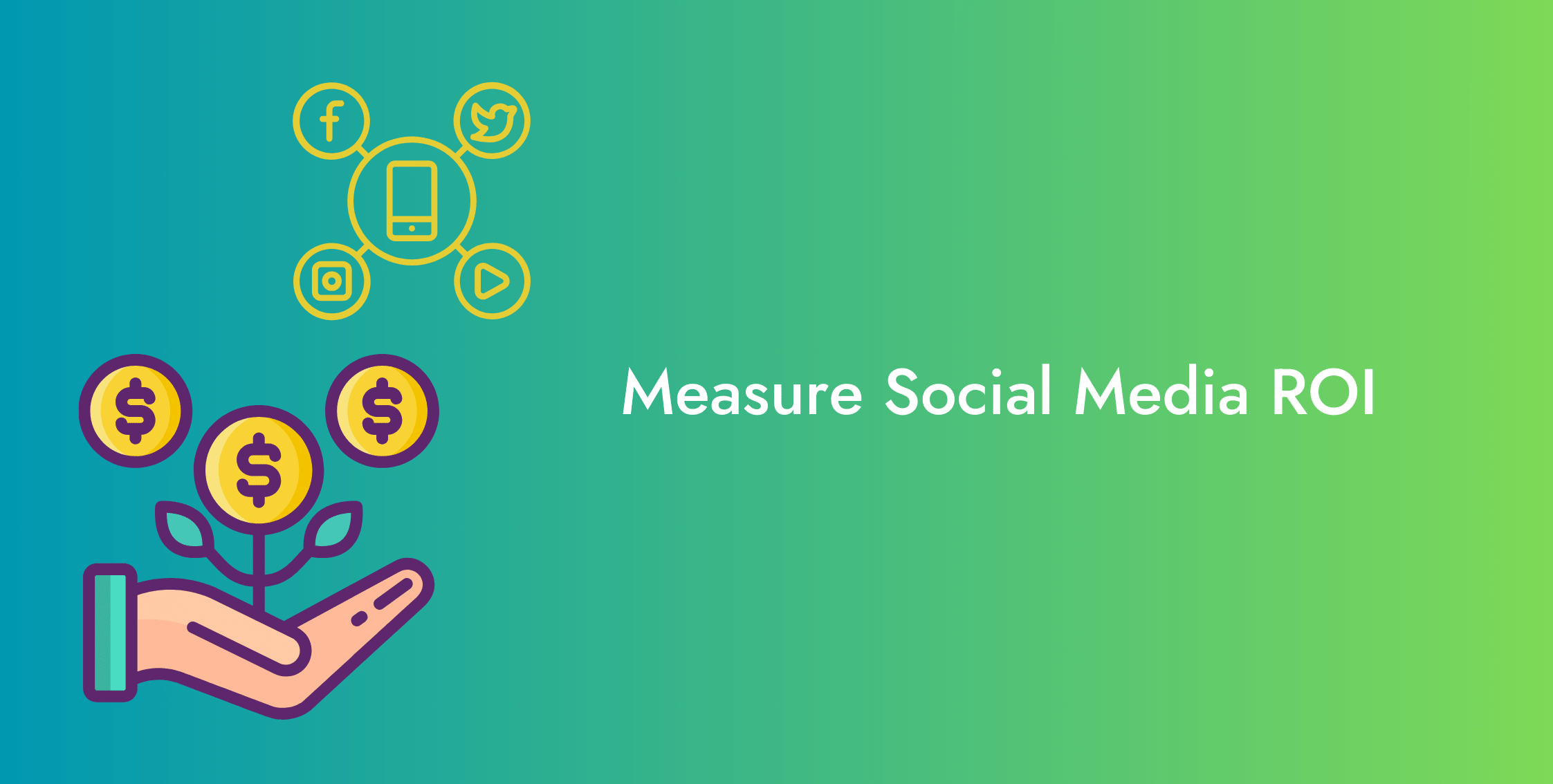Social media managers know the horror of being summoned to a meeting with executives and being asked to show us the social media ROI. This is our recurring nightmare and not because we don’t believe in social. Proving a dollar amount ROI is a pretty complicated process that requires some heavy data lifting.
So if you’re struggling to measure social media ROI yourself, we get it. Measuring ROI on metrics like engagement rate or customer satisfaction feels like a shot in the dark. This post by FOR® will cover everything you need to know about calculating social media ROI, from the things to consider before you start to the tools that can make the process easier.
Social media ROI: The basics
Social media ROI measures the value of your social media campaigns vs your total investment. You calculate this by:
(return – investment made) / investment made X 100
Your return could be leads generated, increased social media engagement, conversions or increased reach – whatever your social media goals are. For example, if your goal is lead generation, your return could be the value of leads generated.
Your investment is any cost incurred when developing and executing your social media strategy. This includes ad spend, influencer pay, employee salaries, and subscription costs for social media management tools.
Factors to consider before getting started
ROI will vary from business to business since every business has its own goals and budget. But there are common factors that most businesses and marketers should consider. These are:
Set your Goals and Benchmarks
What do you want to achieve with social media? There’s so much to do on these platforms it’s tempting to try everything. But to begin with, you should define your top priorities. What will you measure (and your team) on?
Ideally, your campaign objectives should align with your overall business goals. For example, growing your follower count could be a good objective if you want to increase your reach and social media presence.
Once you have your objectives, try to make them more specific. How much site traffic do you want to gain? And by when? Give yourself a target and a timeframe and commit to measuring your social media performance when the time comes.
Think About your Audience
The last thing any marketer wants is to invest in messaging, content and social media channels with no hope of a positive ROI. To avoid this, take time to research your audience. What are their interests and behaviors? Where do they spend most of their time? What pain points would they want your brand to solve? Only by answering these questions can you create the perfect content marketing strategy.
To understand your audience, do demographic research and collect customer feedback through surveys or questionnaires. Alternatively you can use social media analytics from your chosen platforms for insights.
Look at Your Resources
Your resources will dictate the direction of your social media campaigns. Look at everything from your team’s skills to your marketing budget and tools to determine the scope of your campaign, which social media platforms you’ll use and your marketing strategy.
Use all your resources. If you have a big marketing budget you could use paid social media ads instead of just organic social marketing. If you have a skilled videographer on your team you could include video content in your campaign – which consumers now prefer over still graphics.
And use your resources well. To get the best ROI, use the right tools for scheduling, posting, monitoring and analysing social media.
How to Measure Social Media ROI
There are two main variables to consider when measuring social media ROI: cost and return. Here’s a breakdown of how to calculate them.
Cost Analysis
A cost analysis shows how much you spend on social media marketing so you can calculate ROI and plan for future budgets. Keep track of every single cost in your marketing campaign to get an accurate picture of what you’re spending.
If you’re working with social media experts, include their fees in your cost analysis too. Account for every single dollar you spend on social media activity.
Revenue attribution
Revenue attribution allows you to measure the ROI of each social media strategy individually so you can make informed marketing decisions. Focus on the strategies that give you the highest ROI and drop the ones that don’t add value to your social media marketing.
If you’re running multiple strategies at once—like marketing yourself on TikTok, Instagram and Facebook—you can add UTM (Urchin Tracking Module) parameters to your links to see how much traffic each social media platform is bringing. You can also give each platform a unique promo code to see how many conversions each one is driving.
You can also use these attribution methods when working with multiple influencers, testing different content or messaging to see what drives the most revenue.
Lifetime value integration
Remember your social media revenue isn’t just what you earn now. Your campaign could result in long-term client purchases so you need to calculate the lifetime value of customers acquired through social media.
You’ll need to calculate the average purchase value of customers acquired through your marketing, their purchase frequency, customer value (average purchase value x purchase frequency) and lifespan. Then to get the lifetime value you simply multiply customer value by the average customer lifespan. The higher the lifetime value, the higher your social media marketing ROI.
Best tools to measure social media ROI
You don’t need to track metrics manually or do calculations. Here are the top ones to use:
Social media platform analytics
Most social media platforms have built in analytics, like Facebook Insights, Twitter Analytics and Instagram Insights. These track engagement metrics like likes, shares, comments and view counts. Look at this data regularly to see what content and messaging is resonating with your audience.
Google Analytics
Google Analytics is the industry standard for website traffic. Almost every company uses it in some way.
If you have clear goals (as mentioned above), GA becomes super useful. You can set up specific conversion points on your site (a user signed up for your newsletter, requested a demo or made a purchase, as examples) and then track those by source. So you’ll know where more conversions are coming from – social media, search engines or other sources.
GA can also give you a picture of the traffic from your social media campaigns. If increasing website traffic is one of your goals.
Plus it gives you insights into user behaviour once they get to your site. Which pages do they visit? How long do they stay on your website? How many conversion events come from page visits? These are all questions GA can answer if you look at your reports regularly.
CRM software
When connected to social media platforms, customer relationship management (CRM) software gives you a complete view of customer engagement.
By feeding your performance across platforms into your CRM system you can see how social media interactions turn into customer relationships and sales and make better ROI decisions.
Final Thoughts
Continually measure your ROI to determine whether your social media budget is going to the right place. If not, adjust your resource allocations as needed—focus on strategies that align with your business goals and bring positive ROI for social media success. If you want to Boost your online presence by calculating and measuring ROI for your brand, you can contact Toni Hukkanen, the head of FOR®’s Digital Marketing Agency.

Ruby Stauffer is a prominent technology blogger known for her insightful analysis and in-depth reviews of the latest tech trends and gadgets. Her blog has become a go-to resource for tech enthusiasts seeking reliable information and expert opinions on the ever-evolving world of technology.

